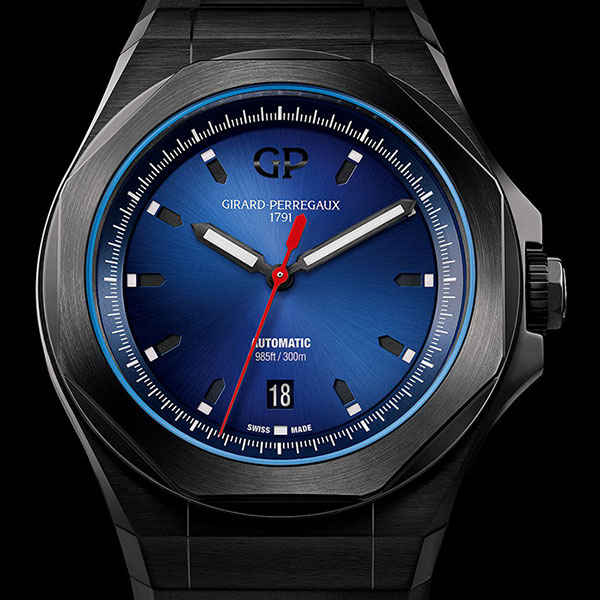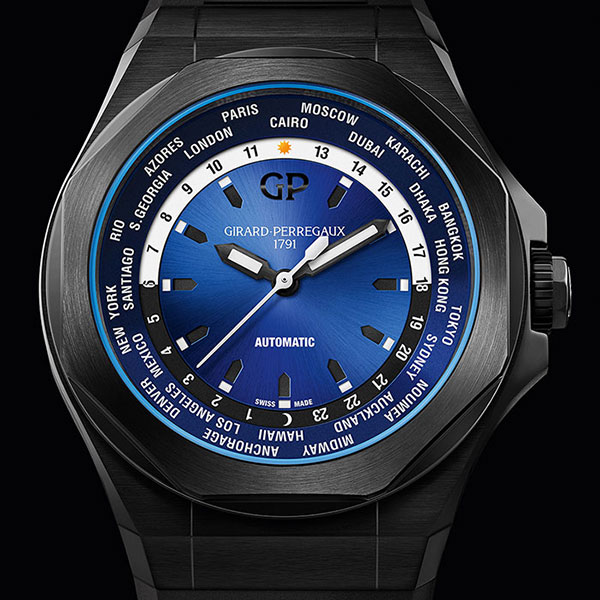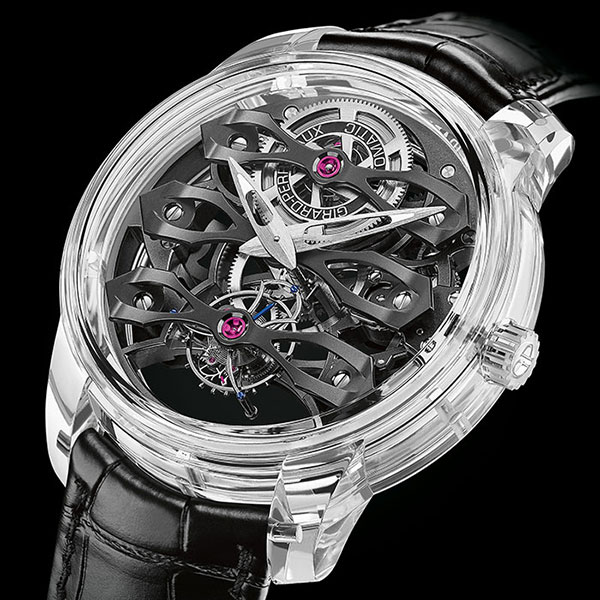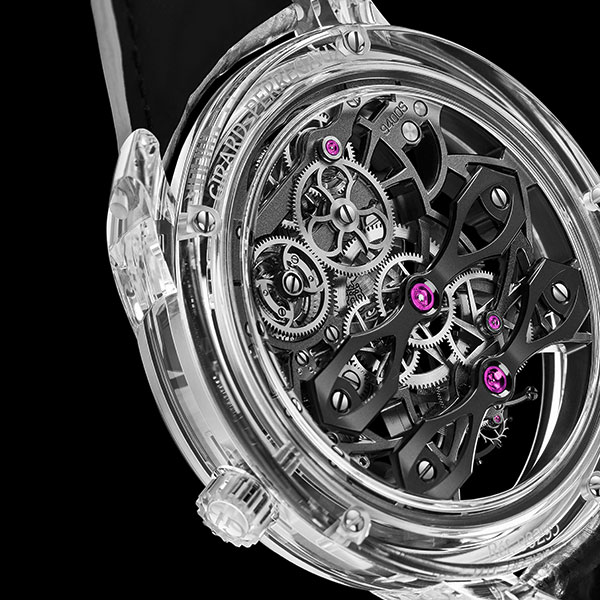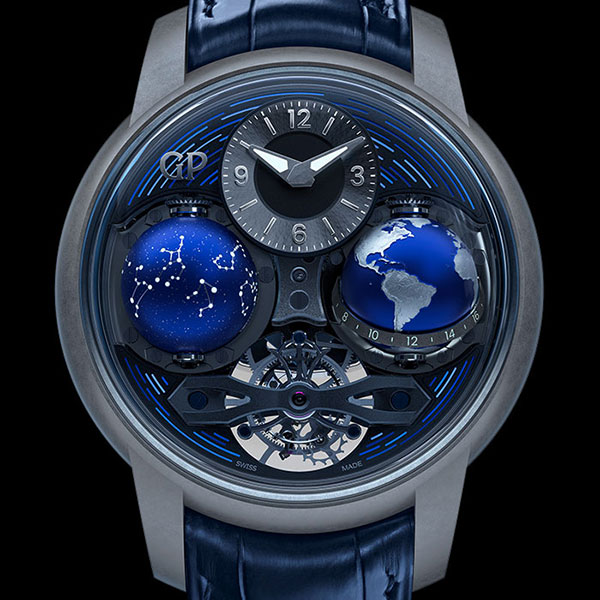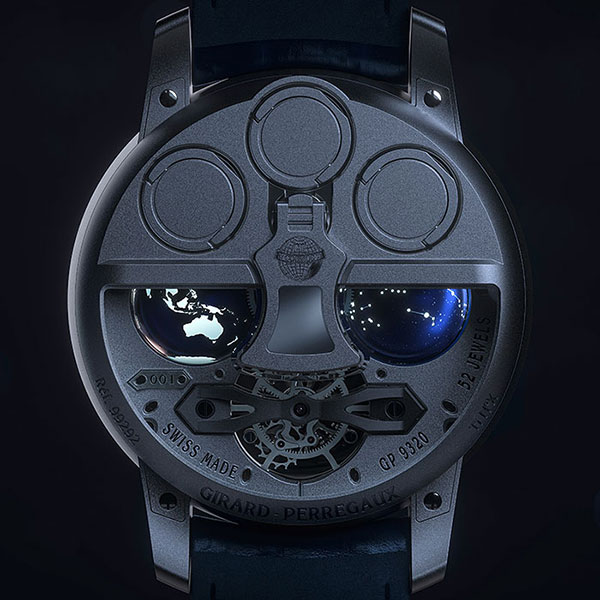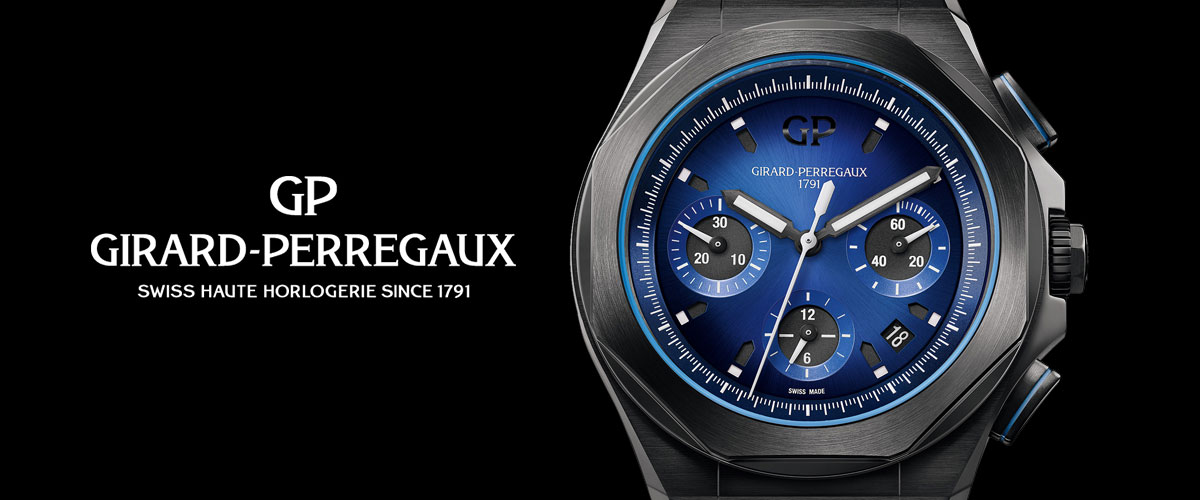
Girard-Perregaux
Cosmic Chronometry
Girard-Perregaux’s horological universe expands this year with new models inspired by Earth and Sky.
Before mechanical timekeepers ticked their first tock, humans used nature to track time. Sun dials. Moon phases. Star charts. This year, Girard-Perregaux taps into horology’s astronomical roots and brings those concepts to life in different watches.
It begins with the new Laureato Absolute, which is a larger incarnation of Girard-Perregaux’s popular Laureato sport watch. The Absolute line debuts with three models, each one powered by an automatic-winding caliber made exclusively by Girard-Perregaux.
They offer different functions that appeal to a range of collectors. For the modernist, the Laureato Absolute is balanced with the date window incorporated at 6 o’clock. The Laureato Chronograph’s angular, sporty look fits with an active lifestyle. And finally, the Laureato WW.TC’s world timer serves as a handy travel companion for the serial wanderer.
The purposes vary, but the watches all share the same dark aesthetic. It begins with the titanium case, which is satin-brushed, treated with black PVD and topped with the Laureato’s signature octagonal bezel. The case measures 44mm in diameter, which makes it larger than the classic Laureato by two millimeters.
The color palette used for the Absolute dials is another recognizable family trait. The blue center darkens to black at the edges, a progression meant to evoke the transition from Earth’s atmosphere into the void of space. The dial is dark, yet easily legible thanks to the contrast provided by the white, luminous hands and markers.
The new Laureato Absolute adds a cosmic twist to original Laureato to create a worthy extension of the legendary design.
LIGHT AND DARK
Born in the 1970s, the classic Laureato is a relatively recent addition to Girard-Perregaux’s portfolio, which extends back more than 200 years. During that time, the company’s manufacture in La-Chaux-de-Fonds has built a reputation for its haute horlogerie with minute repeaters, grand complications and, most famously, the Tourbillon with Three Bridges. That distinctive design won gold medals in two different years at the Universal Exhibition in Paris.
More than a century later, it’s hard to say what visitors to those exhibitions would think of the latest incarnation of that watch, the Quasar. They would surely recognize the three bridges, but the sapphire-crystal case would certainly raise a few eyebrows.
The seeds of the Quasar were planted in 2007, when the company created the Laureato with Three Sapphire Bridges. They continued to grow in 2015 with the arrival of the Neo-Tourbillon with Three Bridges. Just last year, a skeletonized version of the Neo set the stage for the Quasar to emerge.
Named for an extremely bright celestial object, the Quasar plays that role perfectly by using the transparency of its 45mm sapphire crystal case to spotlight the complex movement inside. The view leaves nothing to the imagination, inviting the eyes to explore the manufacture-made automatic-winding tourbillon movement from every angle.
The design of the watch picks up another cue from real-life quasars, which are believed to contain black holes. Likewise, the Quasar’s clear case surrounds a dark center comprised of three titanium bridges treated with black PVD. The modern-day construction serves as a counterpoint to the centuries of tradition represented by the skilled hand finishing used to decorate the movement.
Readability is one thing the Quasar in particular — and Girard-Perregaux in general — gets right about skeleton movements. Too often, skeleton watches are beautifully crafted, gorgeous to look at, and yet impossible to read because the hands blend into the movement. To avoid this pitfall, the Quasar has white-gold hands — with luminous tips — that are easy to see against the blackened movement below.
WORLD TURNING
The Cosmos articulates Girard-Perregaux’s Earth and Sky inspiration quite literally. That’s all thanks to a pair of rotating spheres that present a poetic expression of our planet, and our view of the stars. Each globe is beautifully detailed: one with a luminous topographical map of Earth, and the other with a luminous star chart of the zodiac constellations.
This outstanding visual artistry is matched by the complexity of the watch’s tourbillon-regulated movement. Notice the absence of a traditional winding crown on the right side of the case. In the Cosmos, that task is performed by one of the four tiny adjustment keys integrated into the back of the 48mm bead-blasted titanium case. The three other keys are responsible for setting the time and adjusting the globes.
The Cosmos includes rotating spheres that display the constellations and indicate a second time zone.
The sky chart positioned at 9 o’clock rotates once every 23 hours, 58 minutes and 4 seconds, which is the length of a sidereal day. That’s the amount of time it takes the Earth to rotate back to a fixed point in space, a journey that is nearly four minutes shorter that a solar day.
On the opposite side of the dial, the globe at 3 o’clock can be used for two readings. First, it’s a day/night display that turns to depict Earthâ’s light and dark sides. It’s also a second time zone indicator. As the Earth turns, you can read the local time for various points on the map as they line up with the 24-hour ring that circles the globe.
With the Cosmos, Girard-Perregaux links the celestial and terrestrial in a way that engages the eyes and the mind. It’s the ultimate expression what the venerable Swiss manufacture is trying to achieve this year with its focus on the Earth and Sky.
Click here to view the Girard-Perregaux collection online at Cellini Jewelers.

